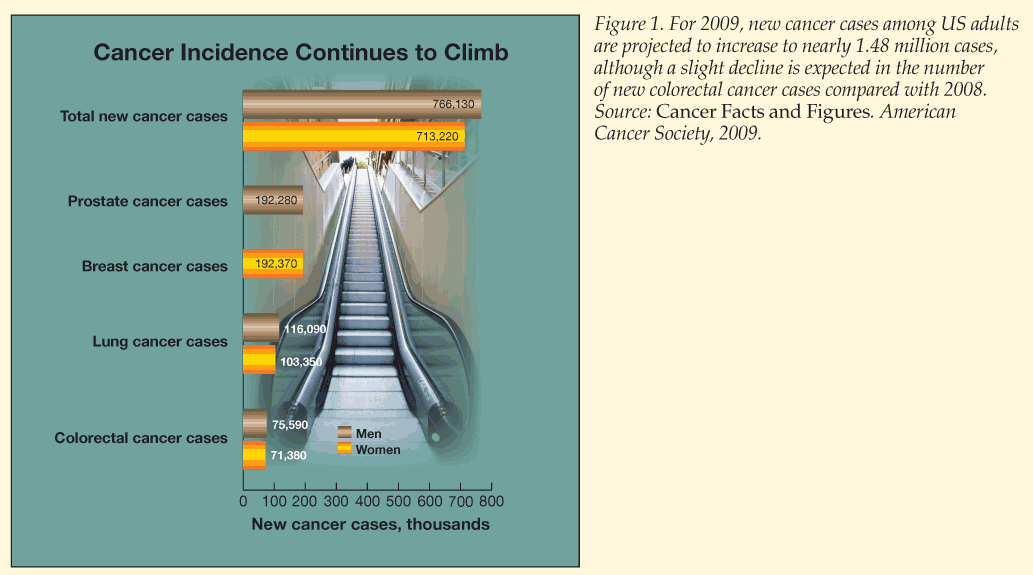Cancer Costs $228.1 Billion Annually
For 2009, 1,479,350 new cases of cancer, up from 1,437,180 new cases in 2008, are expected to be diagnosed in the United States, according to the American Cancer Society’s annual Cancer Facts and Figures report. About 562,340 deaths from cancer are forecast for 2009, a decrease from the 2008 estimate of 565,650 deaths. Cancer is the second leading cause of death in the United States (22.8%), exceeded only by heart disease (26.6%), and is responsible for nearly 1 of every 4 deaths among Americans.
For 2009, 1,479,350 new cases of cancer, up from 1,437,180 new cases in 2008, are expected to be diagnosed in the United States, according to the American Cancer Society’s annual Cancer Facts and Figures report. About 562,340 deaths from cancer are forecast for 2009, a decrease from the 2008 estimate of 565,650 deaths. Cancer is the second leading cause of death in the United States (22.8%), exceeded only by heart disease (26.6%), and is responsible for nearly 1 of every 4 deaths among Americans.

An estimated 766,130 new cases of cancer will develop in men, of which 192,280 cases (25%) will be prostate cancer, 116,090 cases (15%) will be lung cancer, and 75,590 cases (10%) will be colorectal cancer (Figure 1). Of the 713,220 new cases of cancer among women, breast cancer will account for 192,370 cases (27%), lung cancer will account for 103,350 cases (14%), and colorectal cancer will account for 71,380 cases (10%).
Continued growth in the number of cancer cases is expected. Benjamin D. Smith, MD, adjunct assistant professor, department of radiation oncology, University of Texas M. D. Anderson Cancer Center, Houston, and colleagues reported that the number of new cases of cancer diagnosed each year in the United States will soar 45% in the next 2 decades, from 1.6 million new cases in 2010 to 2.3 million new cases in 2030. According to the researchers, whose study was published online in the Journal of Clinical Oncology on April 29, this projected cancer incidence increase will be driven by the aging of the population and shifting demographics; a 67% jump in cancer cases among persons 65 years and older is expected, compared with an 11% increase among younger adults. A 99% increase is expected in cancer cases among minorities. Cancer sites with the highest percentage increase between 2010 and 2030 are expected to be stomach (67%), liver (59%), myeloma (57%), prostate (55%), pancreas (55%), bladder (54%), lung (52%), and colon (52%).

In 2008, the overall costs of cancer were $228.1 billion, up from $219.2 billion in 2007 and $107 billion in 2000 (Figure 2).